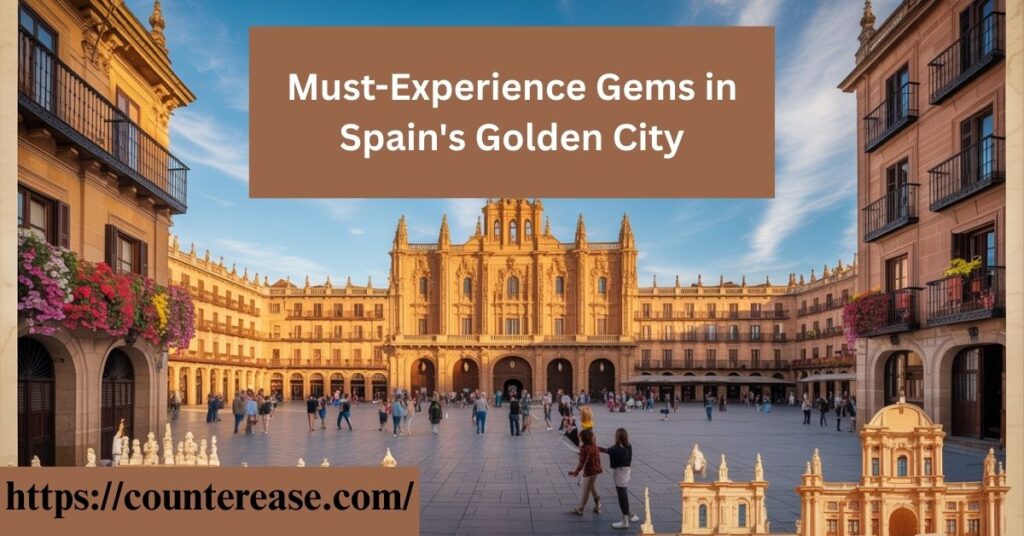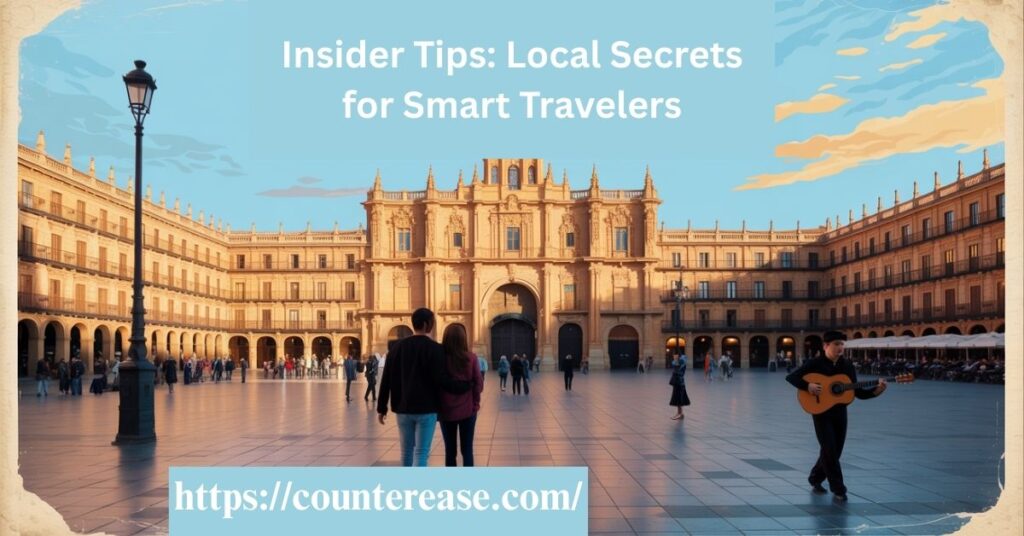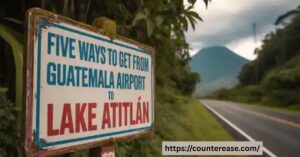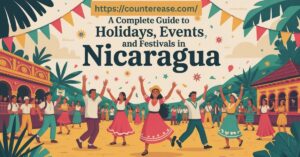The phrase “things-to-do-in-salamanca-spain” refers to the most remarkable attractions, cultural experiences, and historical landmarks that define this charming Spanish city. Nestled in the heart of Castilla y León, Salamanca is a UNESCO World Heritage treasure celebrated for its golden sandstone architecture, vibrant student life, and centuries-old traditions. Every corner tells a story, from its medieval university to its bustling plazas.
What makes Salamanca irresistible is the way it blends history with a lively, modern atmosphere. Strolling through its cobbled streets feels like stepping into a living museum, yet the city buzzes with cafés, music, and local energy. Whether you’re drawn to grand cathedrals, stunning viewpoints, or charming hidden gardens, Salamanca promises an experience that lingers in memory.
Exploring the things-to-do-in-salamanca-spain reveals a perfect balance of culture, architecture, and gastronomy. Visitors can admire Gothic towers, enjoy panoramic city views, or savor authentic tapas in vibrant squares. Each spot captures the essence of Spanish heritage while offering something fresh for every traveler.
Must-Experience Gems in Spain’s Golden City
When Spain’s golden hour transforms Salamanca’s sandstone buildings into a glowing masterpiece, you’ll understand why locals call things to do in salamanca spain “La Dorada.” This things to do in salamanca spain to do in salamanca spain in UNESCO World Heritage Site in Castilla y León offers more than pretty facades. You’ll discover Europe’s oldest active university, architectural treasures spanning centuries, and a vibrant student life that keeps ancient stones pulsing with modern energy.

In things to do in salamanca spain Salamanca stands apart from other Spanish destinations through its unique triple crown: architectural brilliance, academic prestige, and that warm Spanish culture that makes every visitor feel welcome. Whether you’re planning a weekend trip or extending your Madrid adventure, this walkable city delivers experiences that linger long after you leave.
See Also: 15 Things to Do in Panajachel, Lake Atitlan, Guatemala
Historic Heart: Architectural Marvels That Define Salamanca
Plaza Mayor: Europe’s Most Beautiful Square
Plaza Mayor isn’t just another Spanish square—it’s things to do in salamanca spain pure architectural poetry written in Churrigueresque baroque. The 88 pink sandstone arches create a harmonious rhythm that feels almost musical. Each medallion tells a story, featuring everyone from Spanish royalty to literary figures like Cervantes.
Visit during the golden hour before sunset when the stone practically glows. The square lined with tapas bars transforms into Salamanca’s social heartbeat. Locals gather for evening paseos while tourists snap photos of the perfectly symmetrical arcades.
Key Details:
- Best photography time: 7-8 PM for optimal lighting
- Size: 6,400 square meters of baroque perfection
- Construction period: 1729-1755 under Alberto Churriguera
- Medallions: 88 royal portraits and historical figures
The tourist offices here provide excellent maps and historical information. Don’t miss the evening illumination—things to do in salamanca spain transforms the already stunning architecture into something magical.
Cathedral Duo: Old Meets New in Stone
Salamanca’s Old Cathedral and New Cathedral create an architectural dialogue spanning 400 years. The New Cathedral’s Plateresque facade resembles intricate silverwork carved in stone. Look closely—there’s a hidden astronaut among the traditional religious figures, added during 1990s restoration work.
The Old Cathedral showcases pure Romanesque elegance. Its Torre del Gallo features distinctive fish-scale tiles that catch light beautifully. Inside, the massive altarpiece by Nicolás Florentino depicts biblical scenes with medieval intensity.
Essential Information:
- Entry prices: €6 adults, €4.50 students
- Opening hours: 10 AM – 8 PM (varies seasonally)
- Combined ticket: Includes both cathedrals plus Ieronimus Tower
- Accessibility: Limited for wheelchair users due to steep stairs
The Ieronimus Tower climb offers panoramic views across Salamanca’s historic center. It’s challenging but rewarding—260 steps lead to breathtaking perspectives of the university town below.
Casa de las Conchas: The Shell House Enigma
This shell-patterned facade creates one of Spain’s most photographed buildings. Casa de las Conchas displays over 300 carved scallop shells across its golden stone exterior. Each shell supposedly once held a gold coin—local legend claims undiscovered treasure remains hidden within the walls.
The shells connect to the Santiago pilgrimage route. The building’s original owner, Rodrigo Maldonado, was a knight of the Order of Santiago. Today, it houses a public library where you can explore the peaceful interior courtyard free of charge.
Visitor Information:
- Cost: Free entry to ground floor and courtyard
- Hours: Monday-Friday 9 AM – 9 PM, weekends 9 AM – 2 PM
- Architecture style: Late Gothic with Renaissance elements
- Current use: Public library and cultural center
The interior staircase features beautiful Gothic vaulting. Even if you’re not researching, it’s worth stepping inside to appreciate the quiet atmosphere and architectural details.
University of Salamanca: Europe’s Third-Oldest Seat of Learning
Founded in 1218, the University of Salamanca in things to do in salamanca spain predates Oxford and Cambridge. The oldest university in Spain continues operating today, making it a living piece of history. Students still attend lectures in halls where Christopher Columbus once presented his voyage plans.
The facade presents a visual treasure hunt. Can you spot the frog sitting on a skull? This tiny carved amphibian brings good luck to students who find it. The intricate Plateresque stonework includes everything from mythical creatures to royal coats of arms.
Historical Significance:
- Founded: 1218 by King Alfonso IX of León
- Student enrollment: Approximately 30,000 current students
- Famous alumni: Miguel de Unamuno, Francisco de Vitoria
- Notable features: Europe’s oldest university library still in use
The student life atmosphere remains palpable. Young people fill the surrounding streets, continuing traditions that span eight centuries. The prestigious institution maintains its reputation as one of Europe’s leading universities.
Panoramic Perspectives: Best Viewpoints in Salamanca
Ieronimus Tower: Cathedral Summit Adventure
Climbing the Ieronimus Tower requires commitment—260 steps wind upward through narrow medieval passages. Your reward? The finest panoramic views in Salamanca. The city spreads below like a golden tapestry, with the Roman Bridge and River Tormes creating a perfect foreground.
The tower ascent isn’t just about views. You’ll walk across cathedral rooftops, seeing flying buttresses and gargoyles up close. The experience provides unique perspectives on Gothic architecture that ground-level visitors never witness.
Practical Details:
- Ticket price: €6 adults (often included with cathedral admission)
- Physical requirements: Moderate fitness needed for steep stairs
- Not wheelchair accessible: Multiple levels and narrow passages
- Best timing: Late afternoon for optimal lighting
Photography enthusiasts should bring wide-angle lenses. The reflective views across Salamanca’s historic center create stunning compositions, especially during golden hour.
Scala Coeli: Twin Tower Experience at Torres de la Clerecia
Scala Coeli offers a different perspective from the baroque Clerecia towers. The “Via Caeli” exhibition route explains the building’s Jesuit history while leading you upward through increasingly impressive viewpoints.
These towers provide the closest panoramic views of the New Cathedral’s intricate facade. You can appreciate details invisible from ground level—grotesques, pinnacles, and the famous astronaut carving become clearly visible.
Visitor Experience:
- Entry fee: €3.75 adults
- Height: 100 meters above street level
- Exhibition: Multimedia displays about Jesuit history
- Views: Direct sight lines to cathedral facades
The bell tower climb reveals Salamanca’s urban layout. You’ll understand how the university town developed around its academic core, with medieval streets radiating outward from historic centers.
Mirador del Embarcadero: Riverside Serenity
Located 15 minutes’ walk from the city center, Mirador del Embarcadero provides the classic postcard view of Salamanca. The River Tormes creates perfect reflections of the cathedral silhouette, especially during calm morning hours.
This peaceful spot offers respite from tourist crowds. Locals use it for jogging and quiet contemplation. The walking path along the river connects several smaller viewpoints, each offering slightly different perspectives on the historic skyline.
Location Benefits:
- Distance from center: 1.2 kilometers via riverside path
- Best photography: Early morning or late afternoon
- Facilities: Benches, walking paths, limited parking
- Crowds: Much quieter than city center viewpoints
Bring a picnic—this things to do in salamanca spain area provides perfect spots for riverside relaxation while admiring Salamanca’s architectural profile.
Cultural Treasures: Museums and Unique Spaces
Casa Lis: Art Nouveau and Art Deco Paradise
Casa Lis houses Spain’s finest Art Nouveau & Art Deco Museum. The building itself captivates before you see the collections—that stained-glass ceiling creates a kaleidoscope of colored light that changes throughout the day.
The museum displays decorative arts from 1875-1950: Tiffany lamps, Lalique jewelry, Fabergé objects, and French porcelain. Each room showcases different artistic movements, from organic Art Nouveau curves to geometric Art Deco lines.
Collection Highlights:
- Tiffany glass: Largest European collection outside Paris
- Lalique jewelry: Rare pieces from René Lalique’s workshops
- Chryselephantine sculptures: Ivory and bronze figurines
- Decorative objects: Over 2,500 pieces across 19 rooms
The stained-glass ceiling by Maumejean Frères transforms ordinary daylight into artistic illumination. Different times of day create varying color effects—morning light produces cooler tones, while afternoon sun generates warm golden hues.
Practical Information:
- Admission: €4 adults, €2 students
- Hours: Tuesday-Friday 11 AM – 2 PM, 4-7 PM
- Free entry: Thursday afternoons for EU residents
- Photography: Allowed without flash
Cielo de Salamanca: Medieval Sky Ceiling
Hidden within the University of Salamanca’s historic library, Cielo de Salamanca presents a 15th-century night sky depiction painted by Fernando Gallego. This astronomical fresco shows constellations as medieval scholars understood them.
The ceiling survived centuries through luck—when the old library was demolished, workers carefully removed and preserved these precious panels. Today’s restoration reveals original colors that still vibrate with medieval intensity.
Historical Context:
- Created: 1480s by Fernando Gallego and workshop
- Subject: Zodiacal constellations and classical mythology
- Technique: Tempera on wooden panels
- Size: 40 panels covering approximately 100 square meters
QR code translation provides detailed explanations of mythological figures and astronomical symbols. The constellation dating helps visitors understand how medieval scholars viewed the cosmos.
Visiting Details:
- Access: Through university library (guided tours only)
- Booking: Essential to reserve in advance
- Group size: Maximum 15 people per tour
- Duration: 30-45 minutes with expert commentary
Convento de San Esteban: Dominican Masterpiece
Convento de San Esteban showcases Spanish Plateresque architecture at its finest. The facade resembles a massive altarpiece carved in stone, with biblical scenes flowing upward in sculptural narrative. Columbus presented his voyage plans to Dominican scholars here—you’re standing where New World exploration began.
The interior cloister provides peaceful refuge from city bustle. Gothic arches frame a central garden where Dominican monks once walked in contemplation. The silence feels profound after Salamanca’s lively streets.
Architectural Features:
- Facade: Three-story Plateresque masterpiece (1524-1610)
- Cloister: Late Gothic with Renaissance elements
- Church: Baroque altarpiece by José Churriguera
- Dimensions: 90 meters long, one of Spain’s largest convents
Historical Significance:
- Columbus connection: Dominicans advised on New World voyages
- Royal patronage: Supported by Catholic Monarchs
- Academic role: Theological studies complemented university education
- Current status: Active Dominican monastery with museum areas
Visit Information:
- Entry fee: €3 adults
- Guided tours: Available in Spanish and English
- Photography: Permitted in most areas
- Quiet hours: Respect monastic schedule during prayer times
Hidden Gems: Off-the-Beaten-Path Discoveries
Huerto de Calixto y Melibea: Literary Garden Escape
Tucked behind ancient Roman walls, Huerto de Calixto y Melibea offers Salamanca’s most romantic quiet gardens. This botanical garden connects to Fernando de Rojas’ masterpiece “La Celestina”—the tragic love story between Calixto and Melibea supposedly unfolded here.
Roman wall remnants create dramatic backdrops for seasonal flower displays. Spring brings cherry blossoms and roses, while autumn colors complement the ancient stonework. Few tourists discover this peaceful sanctuary, making it perfect for contemplation.
See Also: A Full Guide to the Cost of Living in Argentina
Garden Features:
- Roman walls: 1st-3rd century CE fortifications
- Literary connection: Setting for Spain’s greatest tragicomedy
- Plant varieties: Mediterranean species and seasonal flowers
- Views: Partial river views through garden openings
Best Visiting Times:
- Spring (April-May): Peak flowering season
- Early morning: Coolest temperatures, best light
- Late afternoon: Golden hour illuminates stone walls
- Weekdays: Fewer visitors than weekends
The garden provides perfect picnic spots with shaded areas under mature trees. It’s an ideal location for reading, sketching, or simply escaping tourist crowds.
Roman Bridge: Ancient Engineering Marvel
The Roman Bridge spans the River Tormes with 2,000 years of history beneath your feet. Originally built during the 1st century CE as part of the Via de la Plata route, this 26-arch structure connected northern and southern Spain.
Medieval modifications strengthened the Roman foundation, creating the bridge you see today. Walking across provides excellent river views and perspectives back toward the cathedral complex. The reflections in calm water create mirror images of historic Salamanca.
Engineering Details:
- Length: 176 meters across 26 arches
- Construction: Roman foundation with medieval additions
- Materials: Local granite and sandstone
- Historical route: Part of Via de la Plata (Silver Route)
Photography Opportunities:
- Cathedral reflections: Best from bridge center
- Sunset silhouettes: Cathedral against evening sky
- River perspectives: Looking upstream toward weirs
- Arch details: Roman construction techniques visible
The bridge serves as an excellent selfie viewpoint with cathedral backdrop. Early morning provides the clearest reflections before river traffic disturbs the water surface.
Plaza de Anaya: Academic Elegance
Plaza de Anaya showcases neoclassical architecture surrounding university buildings. This shaded plaza feels more local than Plaza Mayor—students gather here between classes while professors cross toward lecture halls.
The square’s proportions create intimate scale perfect for people-watching. Café terraces provide front-row seats for observing student life and academic rhythms that have continued for centuries.
Architectural Elements:
- Neoclassical facades: 18th-century university expansions
- Proportional harmony: Balanced building heights and spacing
- Academic function: Philosophy, philology, and library buildings
- Student atmosphere: Living example of university town culture
Local Experience:
- Café culture: Students and professors mingle at outdoor tables
- Academic calendar: Busiest during semester periods
- Evening activity: Popular meeting spot for young locals
- Market days: Occasional book markets and student events
This square provides authentic glimpses into daily academic life. It’s less touristy than major attractions while maintaining historical significance.
Local Life: Markets and Neighborhood Experiences

Central Market of Salamanca: Gastronomic Heart
Central Market of Salamanca pulses with authentic local life every morning. This 19th-century iron-and-glass structure houses traditional vendors selling everything from Iberian ham to seasonal produce. The affordable prices and quality ingredients attract local families rather than tourists.
Hornazo, Salamanca’s traditional Easter bread, deserves special mention. This savory pie stuffed with chorizo, ham, and hard-boiled eggs represents local culinary heritage. Several market vendors prepare fresh versions following family recipes passed down through generations.
Market Specialties:
- Local cheeses: Manchego varieties and regional specialties
- Iberian products: Jamón, chorizo, and morcilla
- Seasonal produce: Castilian vegetables and fruits
- Traditional breads: Hornazo and other regional baked goods
Visiting Tips:
- Best hours: 9 AM – 2 PM for full vendor selection
- Language: Basic Spanish helpful but vendors are patient
- Payment: Cash preferred, some vendors accept cards
- Crowds: Busiest on Saturday mornings
The market atmosphere feels authentically Spanish. This isn’t a tourist attraction—it’s where locals shop for daily meals, making it perfect for cultural immersion.
Palacio de Monterrey: Renaissance Nobility
Palacio de Monterrey represents Spanish Renaissance architecture at its most refined. The Fonseca family commissioned this palace in the 16th century, creating a model that influenced colonial architecture throughout the Americas.
Today, the palace houses the Fundación Casa de Alba’s art collection. While interior tours are limited, the exterior facades reward careful study. Notice the classical proportions and decorative elements that Spanish architects later exported to New World colonies.
Architectural Significance:
- Style: Spanish Renaissance with Italian influences
- Architect: Rodrigo Gil de Hontañón (attributed)
- Construction: 1539-1592
- Influence: Model for colonial palaces in Americas
Current Status:
- Ownership: Casa de Alba Foundation
- Public access: Exterior viewing always available
- Interior tours: Limited, advance booking required
- Art collection: Notable paintings and decorative arts
The palace’s corner location provides excellent photography angles. The interplay between Renaissance symmetry and Spanish decorative traditions creates visual harmony that photography captures beautifully.
Culinary Journey: Where Locals Actually Eat
Traditional Salamanca Cuisine
Authentic Salamanca dining extends far beyond tourist restaurants around Plaza Mayor. Local establishments serve regional specialties with value for money that budget-conscious travelers appreciate.
El Mesón de Gonzalo has operated since 1892, maintaining family recipes through five generations. Their chanfaina—a rice dish with offal—challenges adventurous eaters while farinato sausage provides milder introduction to regional flavors.
Local Specialties to Try:
- Hornazo: Traditional Easter bread with meat filling
- Chanfaina: Rice cooked with lamb organs (adventurous choice)
- Farinato: Regional pork sausage with breadcrumbs
- Rosquillas de Ledesma: Sweet ring cookies from nearby town
Recommended Traditional Restaurants:
- Taberna de Pilatos: Authentic tapas, frequented by locals
- Casa Paca: Family-run establishment with regional dishes
- Mesón Cervantes: Historic tavern with traditional atmosphere
Contemporary Dining Experiences
Modern Salamanca balances tradition with innovation. Contemporary restaurants interpret regional ingredients through modern techniques while maintaining local character.
Bambú creates fusion dishes using Castilian ingredients with international techniques. Zazu Bistro focuses on seasonal menus that change monthly, ensuring fresh interpretations of classic combinations.
Modern Dining Options:
| Restaurant | Cuisine Style | Price Range | Specialty |
|---|---|---|---|
| Bambú | Asian-Spanish Fusion | €25-35 per person | Creative tapas |
| Zazu Bistro | Contemporary European | €30-40 per person | Seasonal menus |
| Delicatessen | Gourmet Market-Restaurant | €15-25 per person | Quality ingredients |
These establishments attract both locals and discerning visitors. Reservations are recommended, especially during university semester periods when student families visit.
Essential Food Experiences
Wine pairings deserve special attention. Castilla y León produces excellent wines that complement local cuisine perfectly. Ribera del Duero reds pair beautifully with roasted meats, while Rueda whites enhance seafood dishes.
Budget-friendly options abound if you know where to look. University areas offer reasonably priced menus del día (daily menus) that provide authentic experiences without tourist markups.
Food Experience Recommendations:
- Market visits: Shop for picnic ingredients at Central Market
- Tapas crawling: Follow locals to neighborhood bars
- Cooking classes: Some hotels offer regional cooking workshops
- Wine tastings: Local shops provide education about regional varietals
Practical Planning: Making the Most of Your Visit
Transportation and Access
Getting there from Madrid offers several convenient options. The high-speed train in things to do in salamanca spain provides the most comfortable journey, taking approximately 2.5 hours through beautiful Castilian countryside. Reasonably priced bus services take slightly longer but cost significantly less.
Transportation Options:
- High-speed train: 2.5 hours, €25-45 depending on time
- Regular train: 3 hours, €15-30, more frequent departures
- Bus: 3-3.5 hours, €12-20, most economical option
- Car rental: 2.5 hours, parking can be challenging in historic center
Local Transportation: Salamanca qualifies as an extremely walkable city. Most attractions cluster within the compact historic center, making taxis or buses unnecessary for sightseeing.
Accommodation Strategies
Historic center locations provide walking access to major attractions but cost more and may have limited parking. Modern areas outside the center offer better value for money with easier car access.
Accommodation Types:
- Historic hotels: Character buildings within walking distance
- Budget hostels: Popular with students and young travelers
- Modern hotels: Better facilities, usually outside historic center
- Apartments: Good for longer stays and families
Book early during university graduation ceremonies (May-June) and major festivals when demand peaks significantly.
Timing Your Visit
Best months for visiting are April-June and September-October. Summer heat can be intense, while winter brings cool temperatures but fewer crowds.
Seasonal Considerations:
- Spring (April-June): Perfect weather, moderate crowds
- Summer (July-August): Hot temperatures, peak tourism
- Fall (September-October): Excellent weather, university activity resumes
- Winter (November-March): Cool temperatures, minimal crowds, some reduced hours
Daily timing matters for specific attractions. Ieronimus Tower and Scala Coeli offer best views during golden hour, while markets operate only during morning hours.
Day Trip Extensions: Exploring Beyond Salamanca
Medieval Villages Nearby
Ciudad Rodrigo (90 minutes by car) presents a perfectly preserved fortress town near the Portuguese border. Its massive walls enclose medieval streets that have changed little over centuries.
La Alberca showcases traditional mountain architecture in the Sierra de Francia. This village maintains authentic character with stone houses, wooden balconies, and narrow cobblestone streets.
Day Trip Options:
| Destination | Distance | Travel Time | Main Attractions |
|---|---|---|---|
| Ciudad Rodrigo | 85 km | 90 minutes | Medieval walls, cathedral |
| La Alberca | 75 km | 75 minutes | Traditional architecture |
| Zamora | 65 km | 60 minutes | Romanesque churches |
Natural Escapes
Las Arribes del Duero natural park offers dramatic river gorges and hiking opportunities. The Duero River creates spectacular landscapes along the Portuguese border.
See Also: Review: Chelsea Lounge; American Airlines/British Airways First Class Flagship Lounge New York (JFK)
Sierra de Francia provides mountain villages, hiking trails, and cooler temperatures during summer heat. Traditional villages like Miranda del Castañar maintain medieval character within natural settings.
Nature Activities:
- Hiking trails: Various difficulty levels in nearby mountains
- River activities: Canoeing and fishing in Duero tributaries
- Wildlife viewing: Bird watching in natural parks
- Traditional villages: Architecture and local crafts
Insider Tips: Local Secrets for Smart Travelers

Money-Saving Strategies
Free museum days and reduced admission periods help budget-conscious visitors experience cultural attractions. Many museums offer free entry on specific afternoons or days for EU residents.
Student discounts apply widely if you have valid student identification. The university town atmosphere means many businesses cater to student budgets.
Budget Tips:
- Free attractions: Church visits, garden walks, bridge strolling
- Reduced admission: Thursday afternoons at several museums
- Student prices: Available with valid international student ID
- Picnic opportunities: Gardens and riverside areas perfect for outdoor meals
Menu del día options provide excellent value for money at local restaurants. These fixed-price menus typically include starter, main course, dessert, and drink for €12-18.
Cultural Etiquette
University town respect means understanding academic rhythms. During exam periods, maintain quieter behavior near university buildings and library areas.
Photography permissions vary by location. Churches usually prohibit flash photography while outdoor architectural photography is generally welcome. Always ask permission before photographing local people.
Local Customs:
- Siesta hours: Many shops close 2-5 PM for traditional rest period
- Dinner timing: Locals eat dinner late (9-10 PM)
- Greeting styles: Handshakes for formal situations, cheek kisses among friends
- Dress codes: Modest clothing for church visits
Seasonal Considerations
Weather patterns in Castilla y León bring hot summers and cool winters. Pack layers for temperature variations, especially during spring and fall transitions.
Festival participation opportunities arise throughout the year. Semana Santa (Holy Week) presents spectacular religious processions, while university graduation ceremonies create festive atmospheres.
Practical Weather Advice:
- Summer: Light clothing, sun protection, water bottle
- Winter: Warm layers, waterproof jacket for occasional rain
- Spring/Fall: Layered clothing for temperature changes
- Year-round: Comfortable walking shoes essential
Your Salamanca Adventure Awaits
Salamanca delivers experiences that satisfy every type of traveler. Architecture enthusiasts marvel at centuries of stone artistry. History buffs discover stories spanning Roman engineering to New World exploration. Culture lovers immerse themselves in authentic Spanish culture that university traditions keep vibrantly alive.
This things to do in salamanca spain UNESCO World Heritage Site proves that some destinations reward deeper exploration. Beyond the must-see attractions lie quiet gardens, authentic markets, and peaceful spots where you can appreciate this golden city at your own pace.
Whether you’re planning a weekend trip from Madrid or extending your Spanish adventure, In things to do in salamanca spain, Salamanca offers that perfect balance of historical significance and living culture. The student life energy ensures this ancient city never feels like a museum—it’s a place where past and present create something uniquely compelling.
Start planning your visit to Spain’s most beautiful university town. Those golden stones and centuries of stories await your discovery.
See Also: A Guide to Eating and Street Food in Guatemala
FAQs
1. What new attractions are now available in Salamanca?
As of May 16, 2025, the Museo del Cerro de San Vicente has opened—offering interactive exhibits on the city’s origins, with free guided tours (reservation required).
2. Are there any special summer tour programs in 2025?
Yes! From July 1 to August 31, Salamanca is hosting Salamanca, culta y oculta, featuring 19 guided and theatrical tours, astronomy events, family activities, and hidden heritage spots—many free of charge.
3. When is Holy Week in Salamanca this year?
In 2025, Semana Santa (Holy Week) runs from April 11 to April 20, with solemn processions featuring centuries-old sculptures passing through the historic city.
4. What makes Salamanca known as the ‘Oxford of Spain’?
Salamanca earned the nickname due to its prestigious university, founded in 1218, one of Europe’s oldest, and its rich Gothic architecture in a historic city that echoes scholarly legacy.
5. Can you explore Salamanca’s historical core without spending much?
Absolutely! The historic center is compact and walkable. Walking tours, lovely spots like Plaza Mayor, the frog on the University facade, Roman Bridge, and charming gardens such as Huerto de Calixto y Melibea can be enjoyed for free—just check opening times.
Conclusion
The things-to-do-in-salamanca-spain offer a perfect mix of history, beauty, and culture. From walking through the grand Plaza Mayor to exploring the quiet gardens, each place has its own charm. The golden buildings, the sound of church bells, and the lively streets create a magical atmosphere. Salamanca is not just a city; it’s an experience that stays with you.
Visiting the things-to-do-in-salamanca-spain means enjoying more than just sightseeing. It’s tasting local tapas, feeling the energy of a student city, and discovering centuries-old landmarks. Every moment in Salamanca feels special, whether it’s watching the sunset from a tower or finding a hidden art piece. This is a city where every step tells a story and leaves you wanting more.

Asia Jenni is a passionate travel writer and expert author on CounterEase.com. With a deep love for exploration, she shares insightful travel guides, tips, and destination recommendations, helping travelers discover new places with ease. Her expertise in curating memorable trips and her engaging writing style make her a valuable resource for anyone looking to plan their next adventure.








